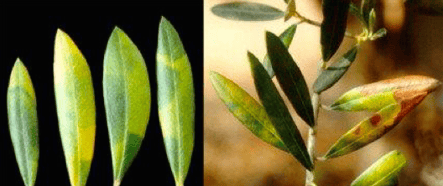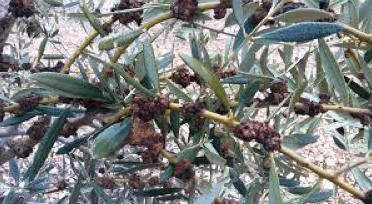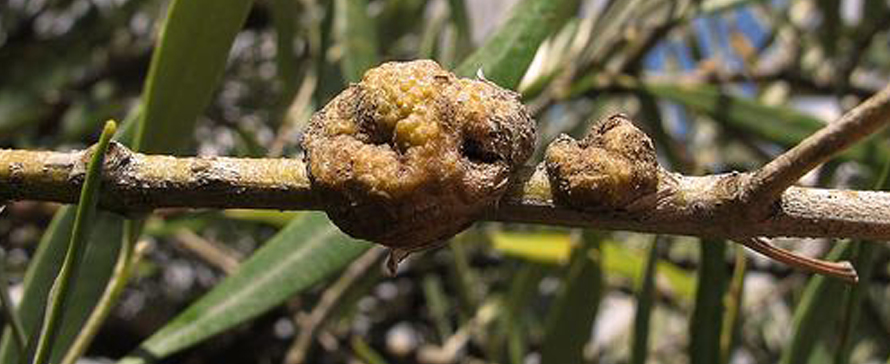Listen to this article
Emplomado
This is a fungal disease whose symptoms and control techniques are similar to repilo.
While the repilo spreads its spores on the upper face of the leaf, the "lead repilo" spreads its spores on the underside of the leaf, so its vital structures are somewhat more protected from the treatment of leaf fungicides than standard repilo.
Whereas the symptoms of standard repilo are unmistakable, it is easy to confuse lead repilo with a nutrition deficiency. To be sure, look at the underside of the leaf and there will be a greyish, ash look to it if there is an infection. Also, standard repilo appears to attack leaves of all ages, while lead repilo is found above all on adult leaves, whose lifespan is diminished due to the disease.
To control it, it is necessary to prune and thin out the tree and use preventive and curative fungicides; in this case more drastic control strategies are required than in standard repilo given that it is very difficult to eradicate.

Tuberculosis
This disease comes from a bacteria and can seriously affect production in extreme cases. There is a high varietal component to the disease. For example, the Picual variety is very resistent to it, while Arbequine is very sensitive to it.
The disease consists of the presence of tumors that appear mainly on the thinnest branches. These warts strangle the sprout and impede normal circulation of sap, taking over the nutrients from the sap. The part of the branch that goes out of the tumor loses its vigor and productivity, and can even completely dry up.

The bacteria of the olive tree tuberculosis is mobile. When there is liquid water on the surface of the plant, several bacterias come out of the knot, that "swim" with the aim of starting up new knots. The bacterias cannot infect healthy bark; they infect the tree through recent cuts where they go in and begin to segregate the hormones that will form the knot.
Therefore, in order for the tuberculosis to appear, the surface of the plant has to be wet, there have to be recent cuts or wounds, and there must be previous knots that serve as a source for inoculation.
Passive and preventive control measures consist of maintaining the tree crowns clear for good ventilation; avoid making too many wounds while harvesting; and minimizing as much as possible the use of pruning and harvesting tools that have been used on infected branches, and cleaning them frequently, or not using them on healthy branches.
There is no way to eradicate the knots, the only thing you can do is prune the infested branches. Apart from routine preventative treatments, when we are dealing with highly sensitive varieties that already have knots, copper treatments need to be applied immediately after wounds are produced.
.png)




